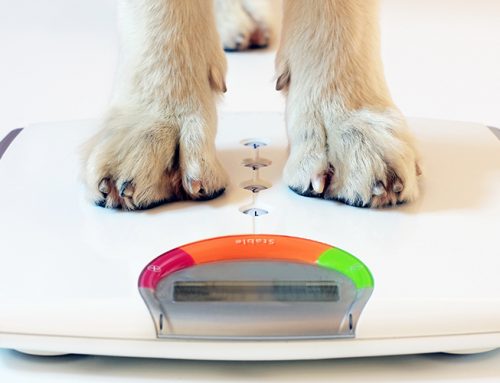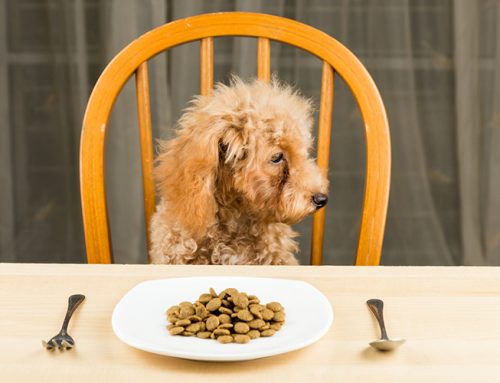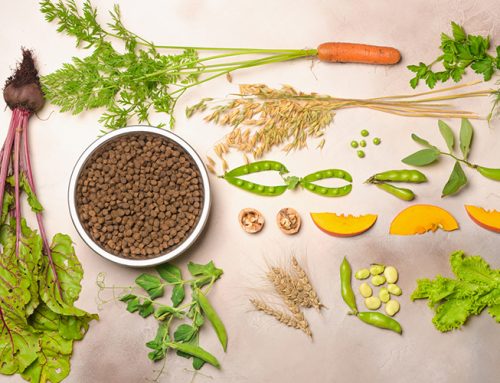Reasons Why Large Breed Puppies Need Different Food Than Small Breed Puppies

Everyone loves puppies. Wriggly. Soft. Adorable. Fluffy. Needy. Puppies demand a lot of attention – and a lot of food. Growing is hard work and puppies need plenty of balanced nutrition to grow at a healthy rate.
Most brands of dog food carry product lines formulated specifically for puppies, whose nutritional needs are different than adult dogs.
Puppies need food that offers a minimum of 22.5 percent crude protein and 8.5 percent crude fat. The Association of American Feed Control Officials sets these guidelines and recommends a higher percentage of vitamins and minerals for puppies.
Most puppies can eat foods that are labeled “for all stages of growth” as long as the food contains the recommended fat and protein levels.
But very small, and very large, puppy breeds may require some nutritional tweaking to their food. Vets and dog breeders can advise you on the best food for your dog if you have a teeny Yorkie pup or a gangly Great Dane puppy. The American Kennel Association has a list of dogs considered a small breed and a second list of large breed dogs. Chances are, your dog falls in the middle.
Feeding Large Breed Puppies
Large breed puppies that are going to grow into big dogs are more prone to developmental orthopedic diseases (DOD) like hip and elbow dysplasia. Some large breeds are more specifically prone to hip dysplasia — Labs and German Shepherds come to mind.
“Nutrition, or to be precise, overnutrition, is an important risk factor of DOD,” writes vet Jennifer Coates for PetMD. “The number one goal when it comes to feeding large breed puppies is to avoid overfeeding, particularly when it comes to calories. By restricting caloric intake slightly, we can slow the puppy’s rate of growth.”
Cutting calories slows the speed at which a large breed puppy grows. They’ll still get as big as they should, but they’ll get there at a healthier rate of development. Optimal growth doesn’t mean growing as fast as possible, especially when it comes to large breed puppies, who can go from lap-sized to eighty pounds over the course of a year.
“When a puppy’s body gets too big, too fast, and gains a lot of weight, it puts stress on the developing skeleton,” writes Karen Becker for Healthy Pets. “Rapid bone growth can result in structural defects of the bones, which makes the skeleton even less able to bear the increasing body weight.”
She also notes that large dogs don’t have the same bone density as small breeds, meaning their bones are already more fragile and prone to injury.
Coates, from PetMD, recommends foods formulated for large breed puppies that have a fat content of eight to twelve percent, based on dry matter.
Large breed puppy formulas should offer lower calorie density per serving than regular puppy foods. It’s best for calories to come from protein instead of fat. A reduction in fat content per serving reduces the caloric density and can help prevent overfeeding. Large breed pups need to eat several measured meals throughout the day.
Look for foods that note a specific animal protein as the top ingredient and that doesn’t contain the generic “animal byproduct” high in the list of ingredients. Whole proteins contain essential amino acids.
Coates, like other vets, notes that large breed puppies need reduced calcium.

“Basically, the range of calcium is now narrower for large and giant breed puppies,” writes vet Deborah E. Linder for Cumming Veterinary Medical Center. “This is because they are more sensitive to an excess or shortage of calcium while their bones are growing (a Great Dane certainly has a lot more leg bone to grow into than a Chihuahua before they become an adult!).”
So watch how much calcium is in your large breed puppy food and make sure treats don’t contain added calcium. Phosphorus should also be reduced in large breed puppy food and should be provided at about a 1:1 ratio. Phosphorus may be slightly increased based on this ratio.
Puppies may miss out on critical nutrients if they eat adult dog food. Dogs can switch to adult food when they are about 80 percent of their full size — for large dogs, this can be anywhere from 12 to 18 months old. Some breeds don’t reach this benchmark until 24 months.
Feeding Small Breed Puppies
Small breed dogs have speedy metabolisms while they’re growing and they need sufficient calories.
Because of their high energy needs, these small pups can be prone to hypoglycemia if they aren’t getting enough food, or food with enough built-in calories — especially when they are under three months old and haven’t developed the ability to regulate blood glucose levels. Pups that have poor nutrition, cold environments, or parasites are particularly prone to hypoglycemia.
“Young animals, in general, do not have the energy stores yet developed that adult animals have, allowing them to maintain adequate blood glucose (BG) in times of fasting or stress,” according to Metropolitan Veterinary Associates (MVA). “Small breed puppies are at an even greater disadvantage because they have a relatively higher metabolic rate and energy requirement per unit body mass than larger breed puppies.”
MVA states that a hypoglycemic puppy is always an emergency requiring a trip to the vet.
Symptoms include lethargy, muscle twitching, loss of appetite, trembling, lack of coordination, unusual behavior, and blindness.
To help prevent this scary situation, look for a small breed puppy food that is more calorie-dense than regular puppy food. Small breed puppies have small tummies, so they need high calories in a few bites and they should be fed multiple times throughout the day. Their food should be higher in protein and fats when compared to other puppy food.
The other benefit of a small breed puppy food is the kibble should be more appropriately sized — perfect for tiny puppy mouths. Alternatively, canned or wet food with high water content may be a good option. It’s also easy to chew, so it’s easy on those little puppy teeth.

High-quality proteins are always important. Avoid by-products and fillers and keep track of what your small pup is eating in case it has food sensitivities, which can be extremely hard on small dogs’ digestive systems. Small dogs can become dangerously and rapidly dehydrated if they have diarrhea. It’s important to find a food that doesn’t upset your small breed puppy’s tummy and to ensure it gets enough water.
Calcium to phosphorus ratio different from what is required for a large breed puppy. Look for something between 1.2:1 and 1.4:1 of calcium to phosphorous.
When it comes to treats for small breeds, look for something appropriately sized. Only about five percent of overall calories should come from treats. Veggies like carrots or green beans provide crunch and low calories.
Small breed puppies are cute but potentially high maintenance — for example, fleas may not do much but cause itching for a larger dog, but small dogs can’t afford blood loss.
Generally, small breed puppies reach 80 percent of their adult size by nine to 10 months old. Then, it’s adult dog food time! Otherwise, your dog may run the risk of becoming overweight because of the nutritional density of small breed puppy food. Vets, breeders, and dog nutritionists can provide advice on what to feed your puppy and when to switch it over to adult food.





